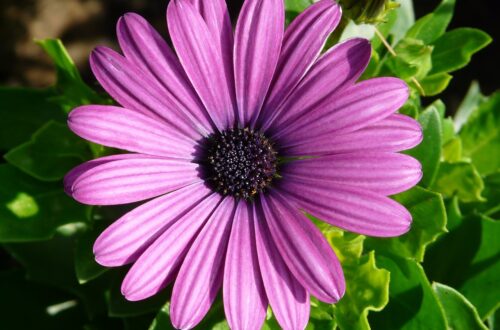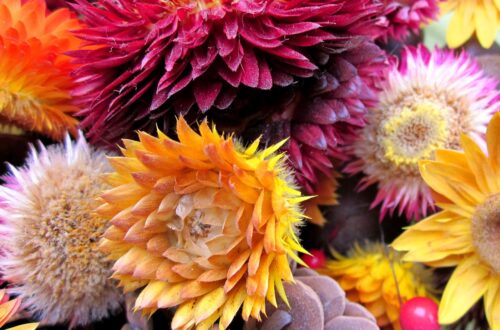
How to Grow and Care for Trillium Flowers (Birthroots)
Have you ever wondered how to cultivate the enchanting beauty of Trillium flowers in your garden? Known for their stunning three-petaled blooms and lush foliage, these woodland perennials bring a touch of elegance and serenity to any landscape. Whether you’re a seasoned gardener or just starting out, growing Trillium can be a rewarding experience. In this guide, we’ll cover everything you need to know about planting, caring for, and enjoying these delightful blooms.
| Category | Details |
|---|---|
| Common Name | Trillium, Birthroot, Wake-robin |
| Botanical Name | Trillium spp. |
| Family | Melanthiaceae (formerly Liliaceae) |
| Plant Type | Perennial |
| Mature Size | 12 to 18 inches tall, 12 to 18 inches wide |
| Sun Exposure | Partial to full shade |
| Soil Type | Rich, well-drained, moist soil |
| Soil pH | Slightly acidic to neutral (6.0 to 7.0) |
| Bloom Time | Early spring to early summer (April-June) |
| Flower Color | White, pink, purple, red, yellow |
| Hardiness Zones | 4 to 9 (varies by species) |
| Native Areas | North America, parts of Asia |
Understanding Trillium
Trillium, often referred to as “birthroot,” is a genus of perennial flowering plants native to North America and parts of Asia. Characterized by their unique three-petaled flowers and whorled leaves, these plants thrive in woodland environments. There are around 40 species of Trillium, each offering a variety of colors and forms. Commonly found in shades of white, yellow, and purple, Trillium flowers can range from delicate to robust, depending on the species. They bloom in early spring, making them a cherished addition to gardens seeking early-season color.

Choosing the Right Trillium Species for Your Garden
Selecting the right species of Trillium is crucial for ensuring a successful gardening experience. Some popular varieties include:
- Trillium grandiflorum (Large-flowered Trillium): Known for its striking white petals that turn pink with age, this species is a favorite among gardeners.
- Trillium erectum (Purple Trillium): Featuring deep maroon or purple blooms, this species adds dramatic color to shaded areas.
- Trillium luteum (Yellow Trillium): A rare find, this species boasts bright yellow flowers and thrives in moist woodland settings.
- Trillium simile (Eastern Trillium): With its charming pink flowers and lush foliage, this species is ideal for creating a soft, romantic garden aesthetic.
When selecting a species, consider your garden’s light conditions, soil type, and moisture levels. Each species has specific preferences, so matching them with your garden environment will yield the best results.

Ideal Growing Conditions for Trillium
To thrive, Trillium flowers require specific growing conditions. These plants prefer partial to full shade, mimicking their natural woodland habitat. Too much sunlight can scorch their leaves, leading to stress and diminished blooms. The ideal soil for Trillium is rich, well-draining, and moist but not soggy. A loamy or sandy soil mix can work wonders.
Additionally, the pH of the soil should be slightly acidic to neutral (around 6.0 to 7.0). Amending your soil with organic matter, such as compost or well-rotted leaf litter, can improve drainage and nutrient availability. Regularly monitor moisture levels, especially during dry spells, as Trillium plants prefer consistently moist soil.

Planting Trillium: Step-by-Step Guide
Planting Trillium requires careful attention to detail to ensure successful establishment. Here’s a step-by-step guide:
- Timing: The best time to plant Trillium is in early spring or late fall when the soil is cooler and moisture levels are higher.
- Site Preparation: Choose a shady spot with well-draining soil. Clear the area of weeds and debris to reduce competition for nutrients.
- Digging Holes: Dig holes that are about 4-6 inches deep and wide enough to accommodate the root system. Space plants about 12-18 inches apart to allow for their natural spread.
- Planting: Gently place the tuber in the hole with the growing tip facing upwards. Cover it with soil, taking care not to compact it too much, as Trillium prefers loose soil.
- Watering: Water the newly planted tubers thoroughly to settle the soil. Keep the area consistently moist but avoid waterlogging.
- Mulching: Apply a layer of organic mulch around the plants to retain moisture, suppress weeds, and maintain a stable soil temperature.

Watering and Fertilizing Trillium
Proper watering is vital for the health of your Trillium plants. During the growing season, ensure the soil remains consistently moist, especially in dry weather. A general rule of thumb is to water when the top inch of soil feels dry. However, avoid overwatering, as soggy soil can lead to root rot.
When it comes to fertilizing, Trillium does not require heavy feeding. A light application of a balanced, slow-release fertilizer in early spring can provide the necessary nutrients. Alternatively, using compost as a top dressing can enhance soil fertility and structure. Always follow the manufacturer’s guidelines for application rates to prevent over-fertilization, which can harm the plants.

Maintaining Healthy Trillium Plants
Maintaining healthy Trillium plants involves a few essential practices:
- Weeding: Regularly check for weeds, especially in the early growing season. Weeds compete for nutrients and moisture, so remove them gently by hand to avoid disturbing the Trillium roots.
- Mulching: A layer of organic mulch helps retain soil moisture and suppresses weed growth. Replenish mulch as needed to maintain a thickness of about 2-3 inches.
- Pest and Disease Management: While Trillium is relatively pest-resistant, keep an eye out for common garden pests such as aphids and slugs. If spotted, treat them promptly with insecticidal soap or organic deterrents.
- Leaf Care: After flowering, allow the leaves to remain for the summer. They help nourish the plant through photosynthesis and support future blooms. Once the leaves yellow and die back, you can remove them.

Propagation of Trillium
Propagation of Trillium can be done through seed or division, although seeds can take a while to germinate. Here’s how to do both:
From Seeds
- Collecting Seeds: After the flowers fade, seed pods will form. Wait until they turn brown and dry before harvesting.
- Sowing: Sow seeds in late summer or early fall in a seed-starting mix. Lightly cover them, as they require light to germinate.
- Germination: Seeds may take several months to germinate. Keep the soil consistently moist and provide a shaded environment.
From Division
- Timing: The best time to divide Trillium is in early spring or fall when the plants are dormant.
- Digging: Carefully dig up the clump, taking care to keep the roots intact.
- Separating: Gently separate the tubers, ensuring each division has healthy roots and at least one growing tip.
- Replanting: Replant immediately in the prepared site, following the planting guidelines mentioned earlier.

Common Issues and Solutions for Trillium
Like any plant, Trillium can encounter challenges. Here are some common issues and how to address them:
Yellowing Leaves
If you notice yellowing leaves, it may indicate overwatering or poor drainage. Ensure the soil drains well and reduce watering frequency. Adding organic matter can help improve soil structure.
Poor Flowering
If your Trillium isn’t blooming well, consider the light conditions. These plants thrive in partial shade, so ensure they’re not getting too much sunlight. Additionally, check soil moisture and nutrient levels.
Pests and Diseases
While Trillium is resistant to most pests, aphids and slugs can be problematic. Use organic insecticidal soap for aphids and set up traps or use diatomaceous earth for slugs.

Creating the Perfect Environment for Trillium
To truly enjoy the beauty of Trillium, creating the right environment is essential. Consider incorporating the following elements:
- Companion Plants: Trillium pairs beautifully with other shade-loving plants such as ferns, hostas, and astilbes. This creates a lush, diverse habitat that can enhance the overall aesthetic of your garden.
- Mulched Paths: Using natural mulch or wood chips for pathways can help maintain moisture levels in the surrounding soil while providing a soft surface for walking.
- Water Features: If you have space, adding a small water feature can increase humidity and enhance the tranquil atmosphere of your garden.
- Naturalistic Planting: Embrace a naturalistic approach by grouping Trillium in clusters or drifts, mimicking their natural woodland habitat for a more authentic look.
Growing Trillium flowers can be a delightful addition to any garden, bringing a touch of woodland charm and tranquility. With the right care and conditions, these perennial beauties will flourish and reward you with their stunning blooms year after year. By understanding their specific needs for light, soil, and moisture, you can create an environment where Trillium can thrive and become a cherished part of your gardening journey.



